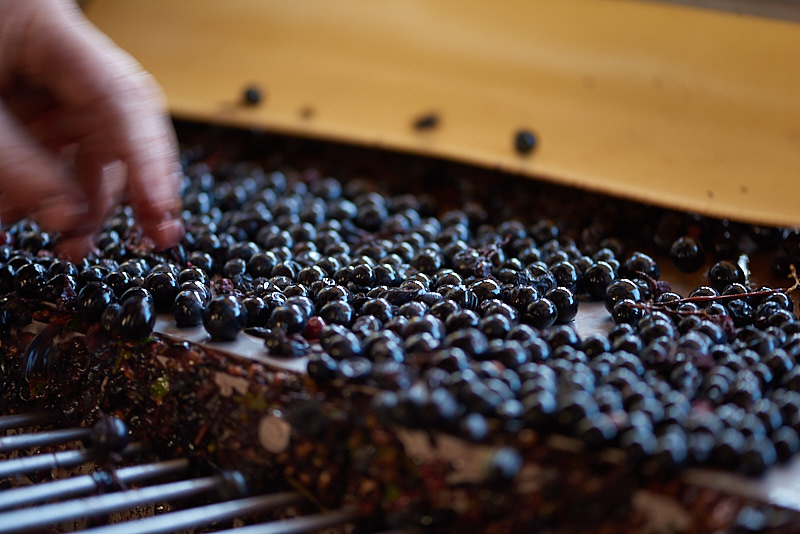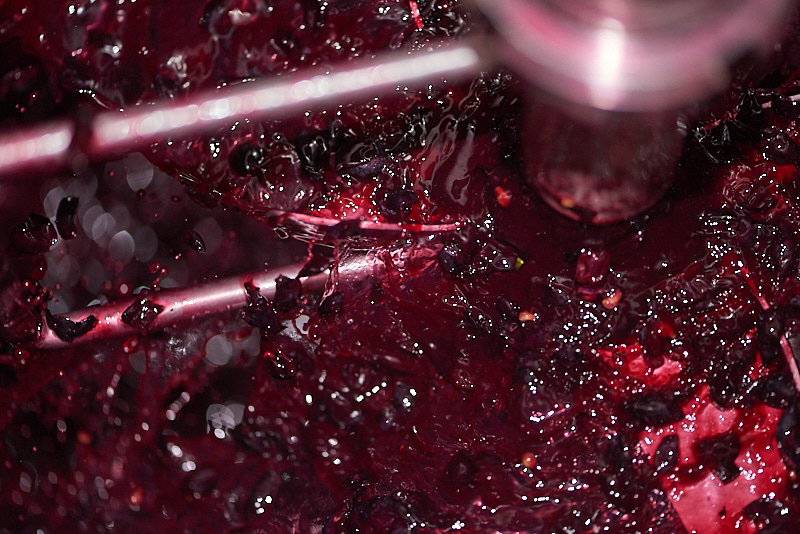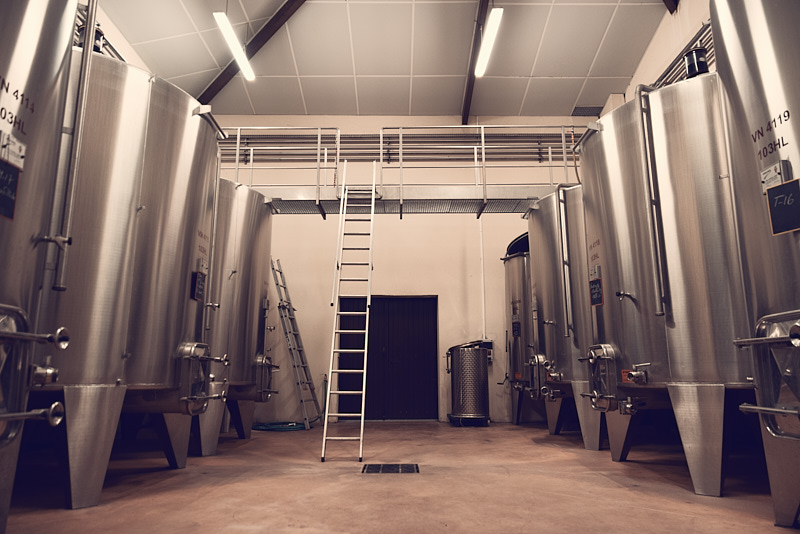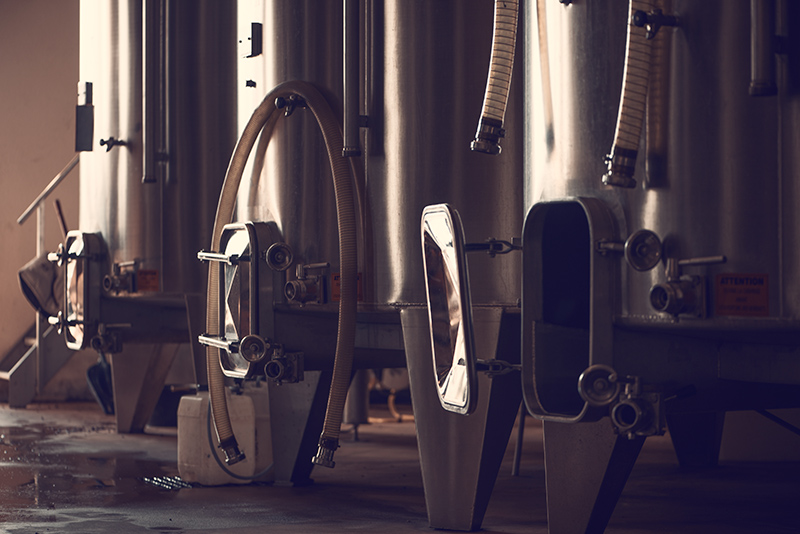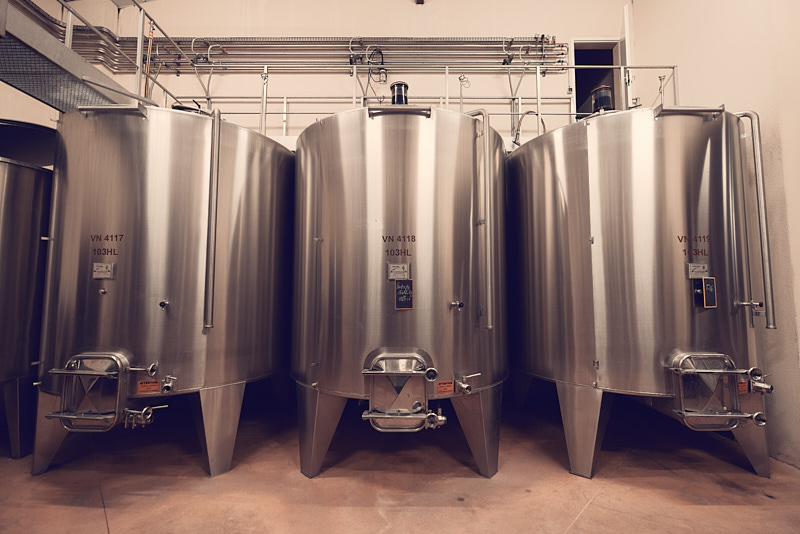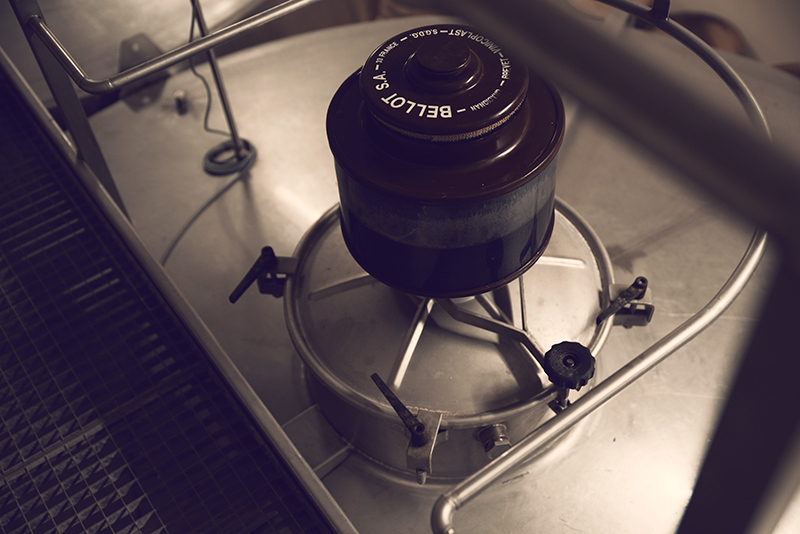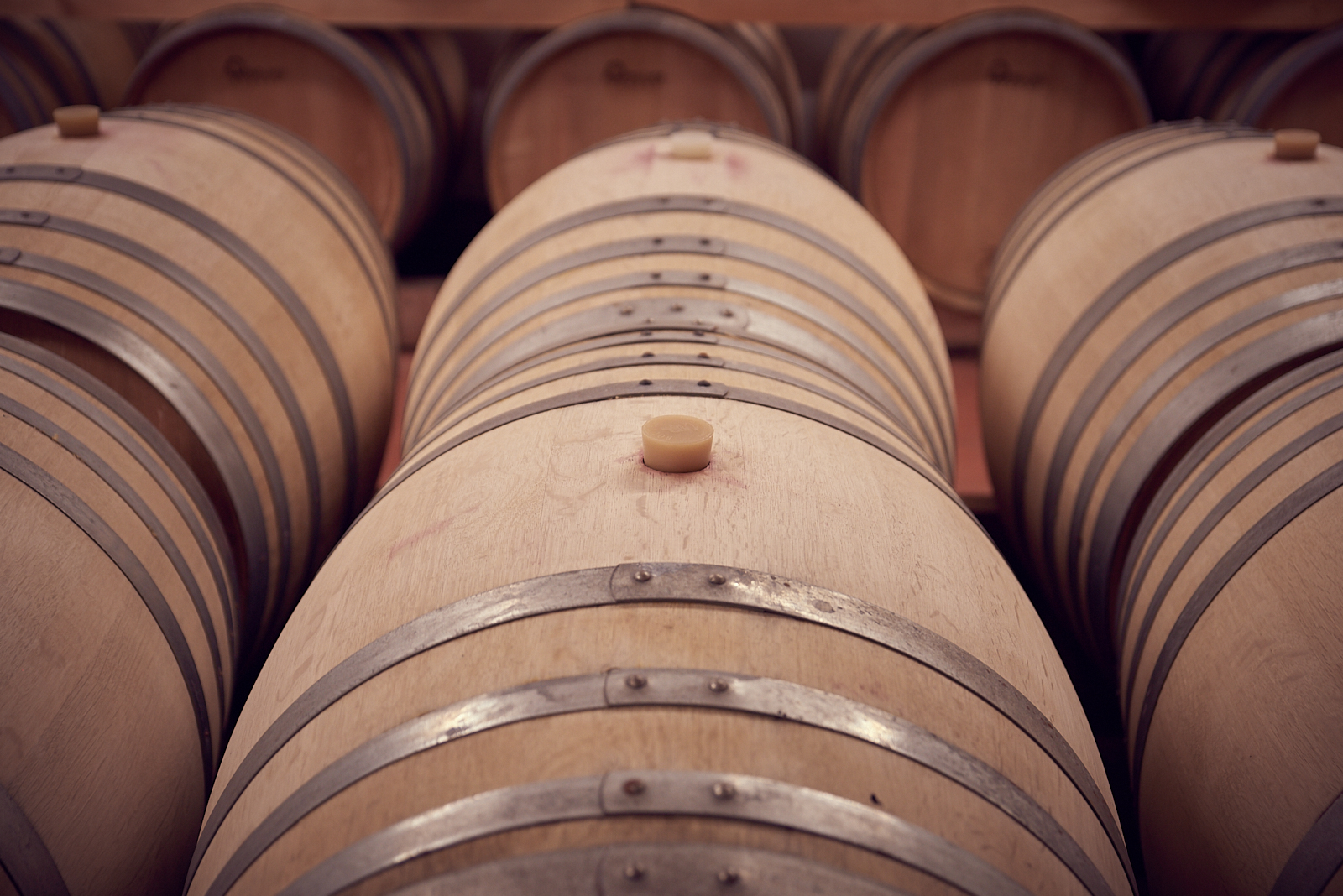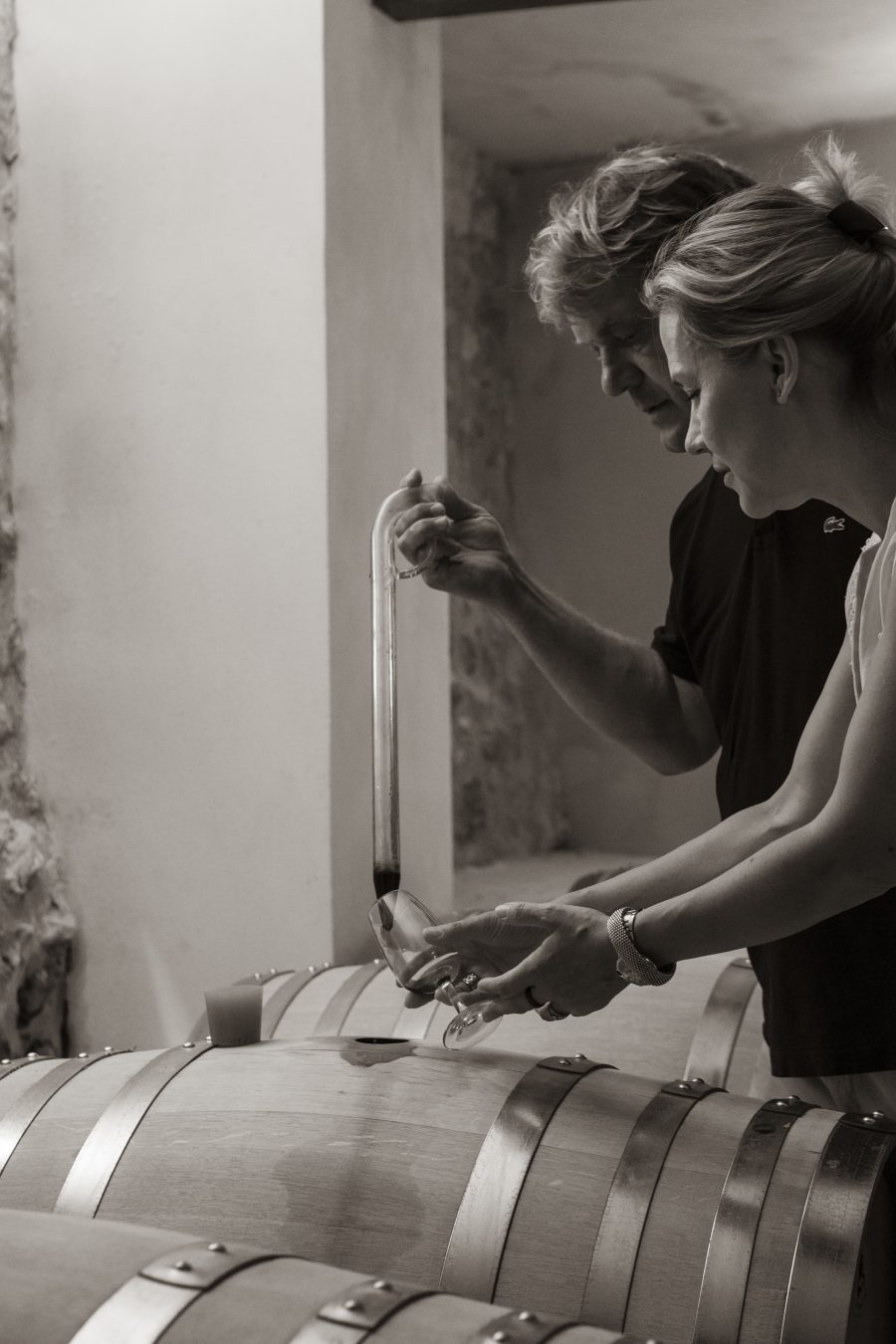Day 23-50
Malolactic fermentation softens the acidity as tart-tasting malic acid, naturally present in grape must, is converted to softer-tasting lactic acid. This phase also stabilizes the wine. Malolactic fermentation is a natural process which the wine starts by itself, and it lasts anywhere between few weeks to few months. Vat temperature is kept slightly above 20°C to invite the process to start –then reduced to 18-19 °C. This temperature best preserves the taste profile of wine from various parcels. As the wine is now prone to oxidation or any harmful bacteria, small amounts of sulphur is added to vats at the end of this phase. Overall, the winemaking at Château Puybarbe must remain as simple and natural as possible, so only the smallest amount of any chemical input is used.
“the winemaking must remain as simple and natural as possible”
When the daily tastings show that the extraction of tannins has reached its optimum, the free-running juice is moved to another vat and the remaining marc is pressed. Resulting press juice (10% of total) is clarified separately and juice of the best lots will later be re-integrated into château’s lighter wines and/or used to fill the barrels during aging.
